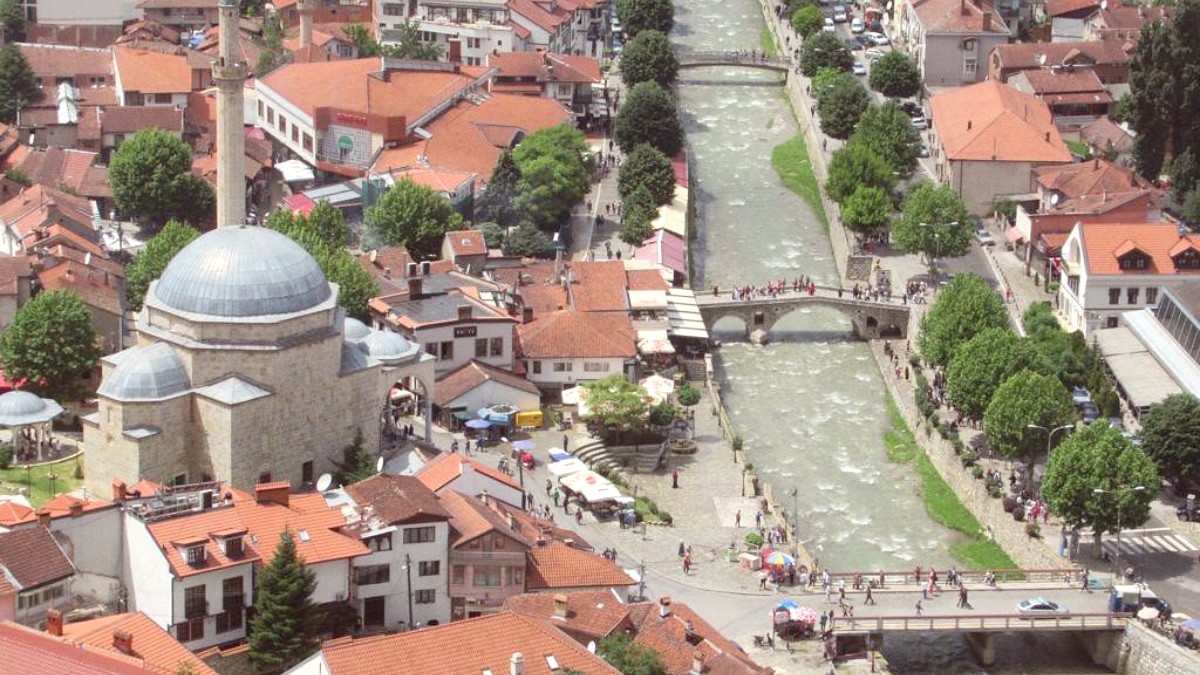
Kosovo
Kosovan cuisine blends Albanian, Ottoman (Turkish), and wider Balkan influences. This heritage yields rich tastes, fresh ingredients, and a focus on grilled meats, savory pastries, and dairy.
Long Ottoman presence is clear in Prizren's sweets and kebab traditions.
Meals often occur socially. Tipping for good service is common. Hosts frequently serve guests coffee or raki (fruit brandy) as a welcoming gesture.
Hand gestures may accompany conversations. Some street foods, like burek or qebapa, are eaten by hand.
Breakfast often a light meal. Lunch for many is the main meal (1-3 PM). Dinner is generally lighter, eaten later (after 7 PM).
Small, grilled minced meat sausages, served with chopped onions, bread (pita/lepinja), and sometimes ajvar or kaymak.
Find at "qebaptore" (kebab shops).
A flaky pastry filled with meat, cheese, spinach, or pumpkin. Excellent for breakfast or a quick snack.
Bakeries ("furra") sell fresh burek throughout the day.
A layered, pancake-like dish prepared on a sač (metal lid covered with hot embers). Served with yogurt or honey.
Some traditional restaurants now offer this festive dish.
Sweet pastry with layers of filo dough, chopped nuts, and syrup or honey.
A spongy cake soaked in three types of milk, topped with caramel. Light and moist.
True fine dining is limited, though some upscale hotels may feature refined experiences. Mid-range restaurants are numerous.
Budget eateries and street food options are plentiful throughout the city.
Some restaurants may offer international dishes, especially in newer parts of the city.
The local market offers fresh produce, regional cheeses, and other local products. It's great for self-catering.
Discover seasonal ingredients here.
Many small shops provide prepared foods for a quick bite or picnic. This offers convenience and local flavor.
Ideal for quick, authentic meals.
Many restaurants located along the Bistrica River offer scenic dining.
Dine amidst historic Ottoman architecture and charming cobblestone streets.
The main square and central areas buzz with activity, good for people-watching.
Some eateries feature traditional decor and an authentic dining experience.
Awareness of gluten-free or other allergies may be limited. Clear communication with translation tools is important.
Stick to naturally gluten-free foods like grilled meats, salads, and rice.
Learn phrases like "Pa mish" (without meat), "Pa qumësht" (without milk), "Pa gluten" (without gluten).
Online translation apps are helpful for more complex explanations. Patience and clear communication aid in finding suitable meal options.
The local market offers fresh produce, allowing you to select ingredients tailored to your dietary needs.
Do not hesitate to ask restaurant staff about ingredients. They often accommodate requests when understood.
Formal cooking classes in Prizren are limited. Inquire with local guesthouses or tour operators for potential private arrangements or informal demonstrations.
Possible to visit local vineyards or cheese producers in the surrounding region via local tourism agencies.
Food stalls are common during major festivals like Dokufest. They offer a chance to sample a wide array of local and regional specialties.
Wander through the Old Bazaar to discover local food stalls and small eateries that offer unique Prizren flavors.
Great for spontaneous culinary finds.
Visit the local market to sample fresh cheeses, regional honey, and seasonal fruits and vegetables directly from producers.
Directly support local farmers.
Wander the historic district for hidden cafes and bakeries, discovering authentic tastes.
Engage with vendors at the market for fresh insights and stories about their produce.
Discover what fresh produce is in season during your visit for the most flavors.
Prizren's food culture is a blend of hospitality and rich traditions. Take time to savor each meal.